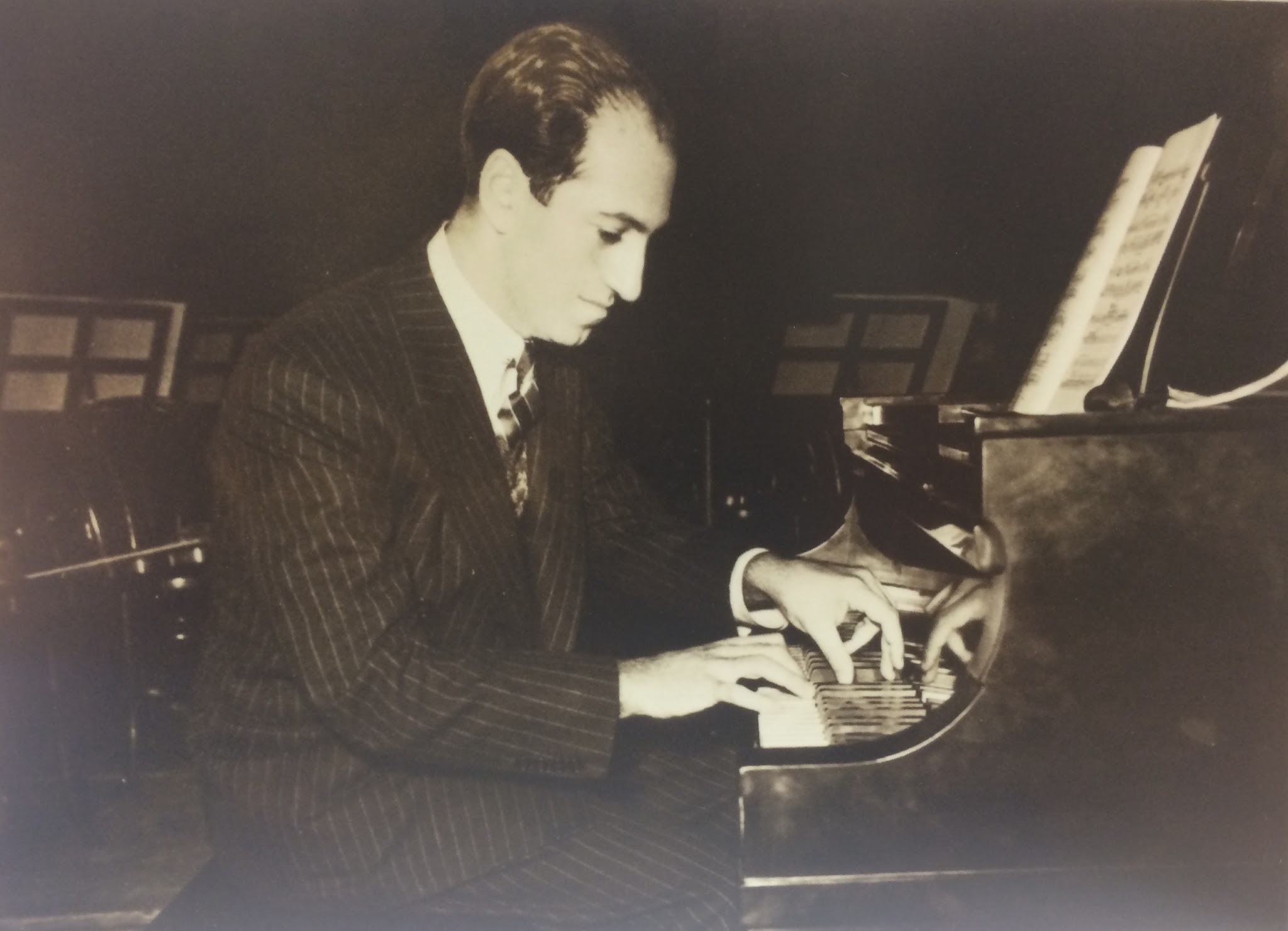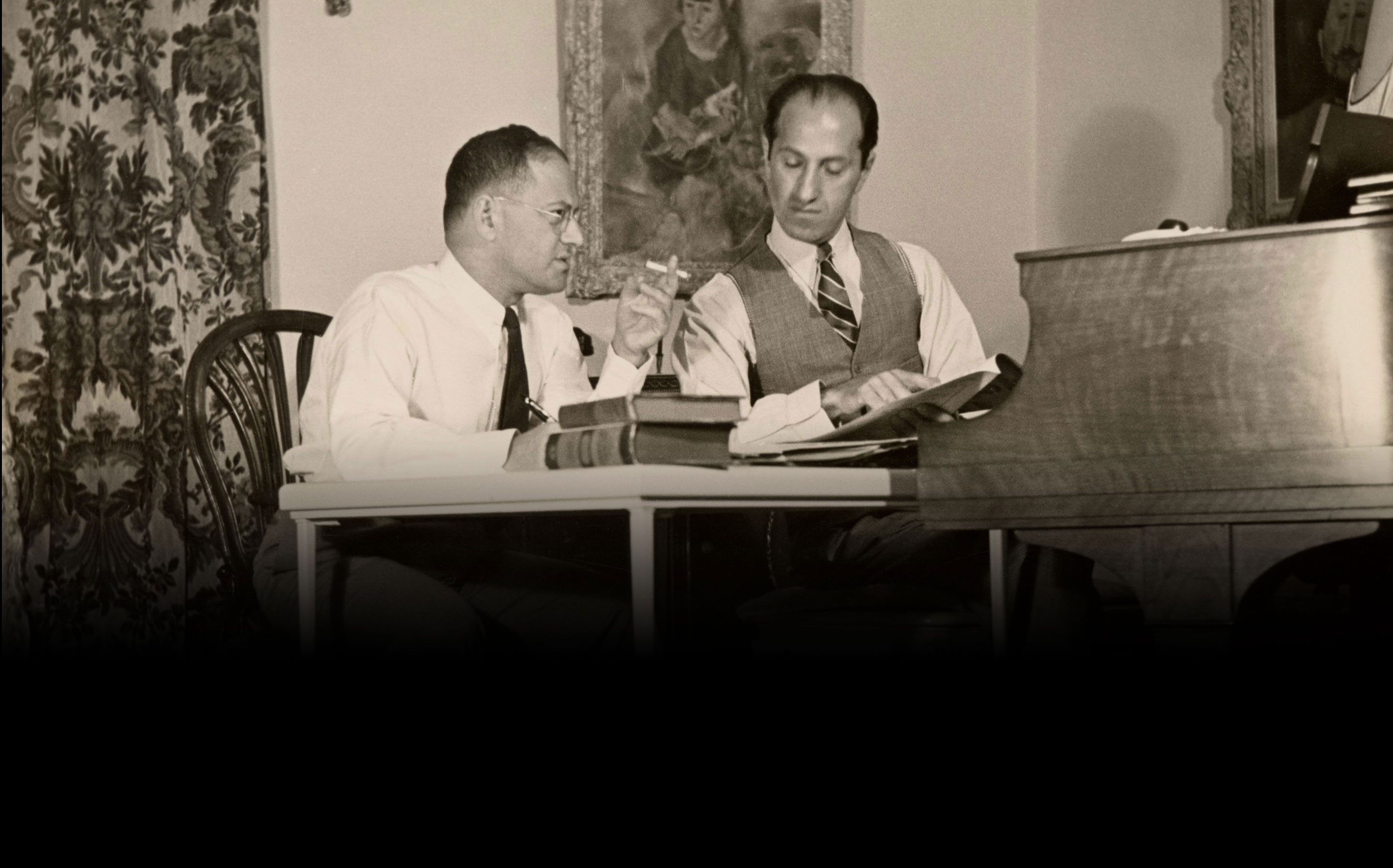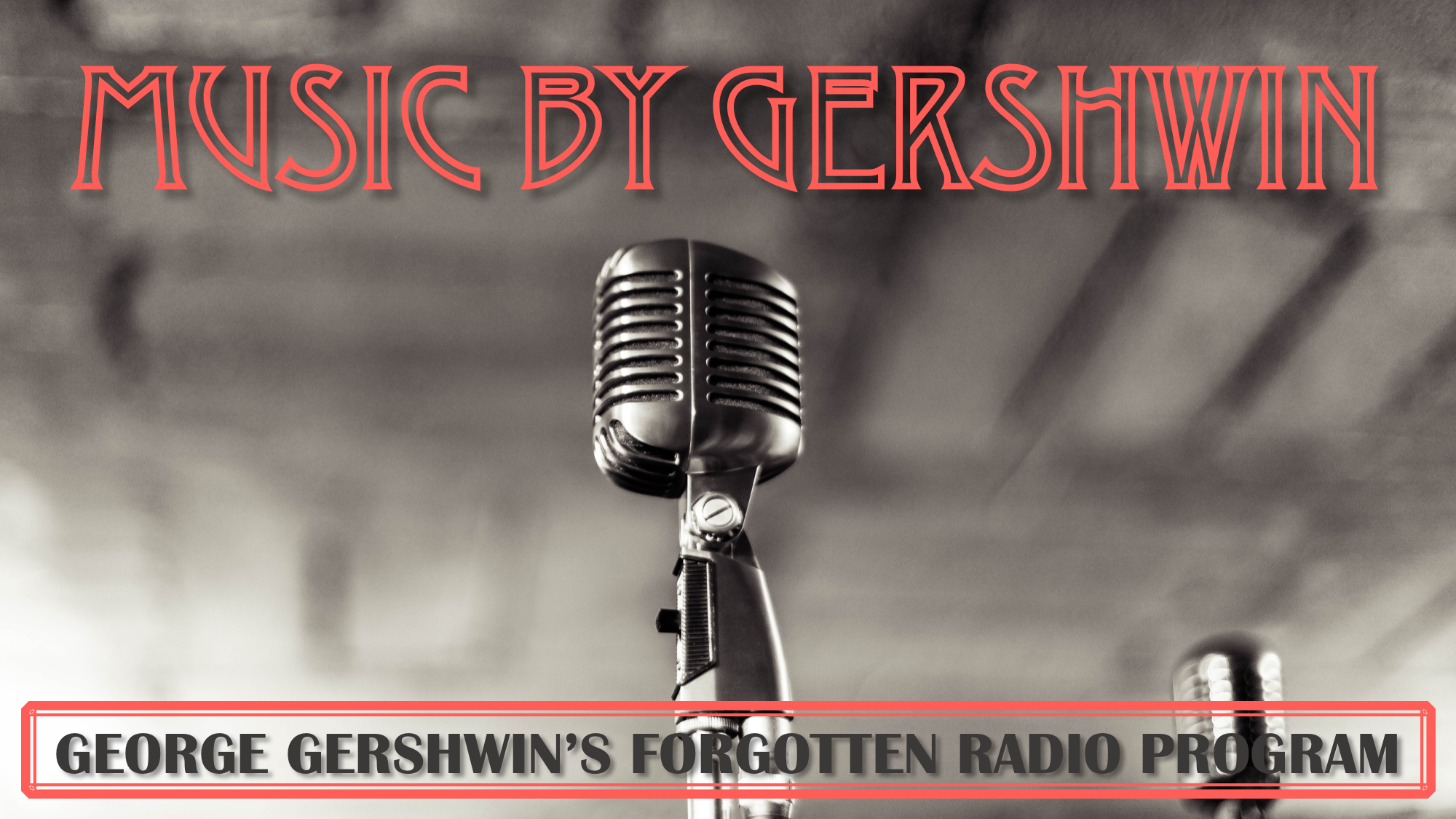Music by Gershwin—George Gershwin’s Forgotten Radio Program
By Sarah Sisk
In 1934, George Gershwin hosted his own radio show, called Music by Gershwin. Although little-known today, this program happens to be crucial to the existence of one of Gershwin’s greatest works, Porgy and Bess.
“George Gershwin belonged to the radio age. His genius freshened the life-blood of radio—Music. His growth and triumphs paralleled the magic advances of broadcasting which in a flash introduced his popular melodies to the entire nation.” New York Times, July 18, 1937.
So begins a July 18, 1937, New York Times article, written in homage a mere week after the beloved composer’s unexpected death. It highlights an important aspect of Gershwin’s popularity in his own lifetime—his penchant for being at the forefront of music technology. In his time, this technological advancement was rapid, almost bewildering. While Gershwin’s music was first sold in the form of sheet music, piano rolls, and records, by the time he achieved national attention in the 1920s, a new revolution had emerged: public broadcast radio.
Gershwin was canny enough to catch onto this latest development, which shortened to near instantaneity the period between the creation of music and its popular reception, drawing him closer to thousands of fans through live radio performances and interviews. But in 1934, Gershwin turned to the radio for another, equally relevant reason: he needed money. Specifically, he needed funding for his ambitious plans to write Porgy and Bess, his first full-length opera. DuBose Heyward—the author of the novel, Porgy, which served as the source material for the opera—was eager to get started on his collaboration with Gershwin, but it was clear to both the writer and the composer that the amount of time needed for this endeavor would first require some financial resources.
As a result, Gershwin signed on to host his very own radio show, Music by Gershwin. It premiered on the NBC Blue Network on February 19, 1934, a fifteen-minute-long program that aired on Mondays and Fridays at 7:30 PM through the month of May. The show resumed in September of that year, moving to CBS and changing to a half-hour format once weekly, at 6 PM each Sunday. With Don Wilson as announcer and a live studio orchestra led by Louis Katzman, Gershwin himself introduced the numbers that he selected for each program. These were generally a mix of his own works and the works of contemporary popular composers, including the likes of Ferde Grofé (who orchestrated Gershwin’s Rhapsody in Blue), Irving Berlin, W. C. Handy, and even George’s younger brother, Arthur Gershwin. The show was sponsored by Feenamint, “a delicious chewing gum laxative”—a succulent detail that gave Gershwin’s friends quite a bit of amusement.

Feenamint: “It’s modern, scientific, and tastes like your favorite chewing gum.”
Each broadcast kicked off with the phrase “Music by Gershwin!” cheerily declared over the theme of “The Man I Love,” a 1924 Gershwin number. Announcer Don Wilson introduced the show as “an intimate review of present-day music,” but it also served as an informal look at the composer himself. While touted by Wilson as “America’s leading modern composer,” George’s radio persona was friendly and modest. “I want you to feel as though you had simply dropped in at my house, or I at yours, to run over a few tunes that may have given us pleasure,” he spoke in the very first show. (Broadcast, Feb. 19, 1934) He would often lead into his songs with amusing anecdotes about their creation before taking to the keys to play them himself, evincing his performance skills for which he was famous (and fun at parties). Sometimes he would comment on the technical aspects of his songs as well. When he introduced his “I Got Rhythm” Variations in the April 30, 1934, broadcast, he explained and demonstrated the playfully reimagined melodies beforehand, peppering his dialogue with jokes: “Next, the piano plays the rhythmic variation in which the left hand plays the melody upside-down, while the right plays it straight, on the theory that you shouldn’t let one hand know what the other is doing.” (Broadcast, Feb. 19, 1934)
Music by Gershwin may have provided Gershwin with paychecks (a tidy $2000 a week, in fact) and some good publicity, but the very thing that was funding Porgy and Bess was also impeding its progress.
“I have been hearing you on the radio,” Heyward wrote in a letter to the composer on March 2, 1934, “and the reception was so good it seemed as though you were in the room. In fact, the illusion was so perfect I could hardly keep from shouting at you ‘Swell show, George, but what the hell is the news about Porgy!!!'”
March 2, 1934. Posted with permission of the South Carolina Historical Society.
Heyward was growing anxious about the project’s timeline. He wanted Gershwin to come down to his home in South Carolina to facilitate the opera’s progress, but as long as Music by Gershwin was airing, Gershwin would have to remain in New York. Still, despite being “disappointed” by the situation, Heyward could not help but admit that the publicity afforded by the radio show would mean “good business” for Porgy and Bess.
In a way, Heyward’s observations provide a glimpse of the Gershwin that his contemporary audience would have known. While seeing him perform live would have been an experience only for those lucky or privileged, anyone with a radio could tune in and hear him speak, joke, and perform in real time. The inherent accessibility of Gershwin’s radio presence did not go unnoticed by Heyward, who further wrote in the letter: “It is a good show. You have managed to give it a charming informality, and, in spite of the brevity, a definite impress of your own personality.” Through these broadcasts and other radio appearances, Gershwin advertised not only his music, but his image, fashioning himself into a truly “popular” composer whom fans could feel as though they knew personally.

A publicity photo taken for Gershwin’s 1934 radio program, Music by Gershwin. Used with permission of the Library of Congress and the Gershwin Family Estates
In the end, everything worked out. The first series of the program ended in May, and—with his pockets adequately lined—Gershwin was able to spend a good part of the summer near Charleston, Heyward’s hometown. But unlike the grandiose work it made possible, Music by Gershwin faded into the background of Gershwin’s eventful career history. Today, only a few known recordings of the show survive, and even these were nearly forgotten. They were discovered in the 1970s by historian Edward Jablonski, who found the broadcasts from February 19, 1934 (the show’s premiere), and April 30, 1934. They had been stashed away in Ira Gershwin’s home, in a box labeled “George Gershwin Radio Broadcasts.” (Two full Music by Gershwin broadcasts are available as part of a collection of rare Gershwin recordings in the album Gershwin Performs Gershwin: Rare Recordings 1931–1935.)
When Gershwin died on July 11, 1937, less than three years after Music by Gershwin‘s run, radio stations everywhere paid their respects by broadcasting his melodies. It was a fitting tribute to a man who had enchanted his audience over the airwaves, and one celebrated by the conclusion of that aforementioned 1937 New York Times article:
“So during the past week radio men everywhere joined with the music and film worlds to mourn a composer whose songs will forever flow unseen into space from the aerials of the earth, following him off into the infinite never to return but to brighten the hours for countless listeners who will hear the music as it speeds to mingle with the stars. Radio spins across the skies an everlasting wave-lengthed memorial of rhythm and rhapsodies to his genius. George Gershwin left radio a legacy of melody.”
Gershwin may have given radio his musical legacy, but as in the case of Music by Gershwin, he gave it another legacy as well: that of the man himself.
For more about Gershwin and Heyward’s Porgy and Bess letters, be sure to follow our From the Archives blog series!
Further Reading:
Dubose Heyward Papers. SCHS 1172.01.01. George Gershwin to DuBose Heyward, May 20th, 1932. Letter. Box G 01-01. The South Carolina Historical Society, Charleston, SC.
Gershwin, George, and Abbie Mitchell. Gershwin Performs Gershwin: Rare Recordings 1931-1935. Ocean, N.J.: MusicMasters, 1991.
Gershwin, George and Ira Special Collection “Gershwin Radio Show Clippings and Scripts” Box, Library of Congress: Washington, DC.
Jablonski, Edward, and Lawrence D Stewart. The Gershwin Years: George And Ira. 1st Da Capo Press ed. New York: Da Capo Press, 1996.
“NEWS AND GOSSIP OF THE STUDIOS.” New York Times (1923-Current file): 1. Jul 18 1937. ProQuest. Web. 28 June 2016.
Pollack, Howard. George Gershwin: His Life And Work. Berkeley: University of California Press, 2006.
Rosenberg, Deena. Fascinating Rhythm: the Collaboration of George And Ira Gershwin. Ann Arbor: University of Michigan Press, 1997.



Excellent article, thank you for writing about Gershwin’s radio program. It would be very interesting to have more details about the recordings of the show that have survived – dates, content, etc…. That info would make a great future blog post!
Thank for sharing youtube vedio link. Many information are available in this vedio